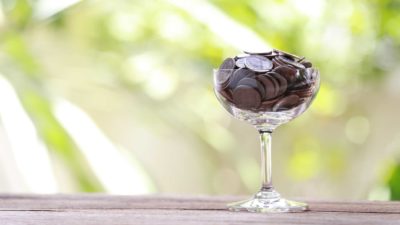Although looking into the past can't tell us how the future will play out, it shows us that recent events aren't unique. And with the S&P/ASX 200 Index (ASX: XJO) posting substantial losses today and over the past couple weeks, it's interesting to look back at the last major stock market event – the GFC – and see how the 200 largest Australian companies performed throughout it.
The ASX 200
Prior to the GFC, the ASX 200 hit a high in November 2007 of 6851.5 before tumbling 54.5% to a low of 3120.8 in March 2009. It then took the index until July last year (2019) to surpass this pre-GFC high. However, in my opinion that's not the full story.
Since the majority weighting in this index are dividend-paying shares, I think it only fair to include the return received from dividends also. If we adjust for the total return, i.e. for share price appreciation and dividend return, we see the ASX 200 surpassed its pre-GFC high in September 2013 – far sooner. This goes to show that high quality dividend paying shares can continue to pay out to shareholders through bear markets, as dividends tend to be more stable than a company's share price, thanks to the volatility of investor sentiment.
ASX 200 dividend shares
Next, let's look at a couple of the largest ASX 200 dividend paying companies and explore how their dividend payments performed throughout the GFC in relation to their share price movements.
Woolworths Group Ltd (ASX: WOW)
Despite Woolworths' share price falling from a high of $35.47 to $23.12 during the GFC, the supermarket chain continued paying, and increasing, its dividends throughout this period. In fact, it paid out a total of 74 cents to shareholders in 2007, 92 cents in 2008 and 104 cents in 2009.
Commonwealth Bank of Australia (ASX: CBA)
Looking at the share price of the Commonwealth Bank during the GFC, we can see that it was far more volatile than its dividend payments, which it only cut in 2009. At the time, Commonwealth Bank shares fell from a high of $61.82 in 2007 to $23.90 in 2009, a drop of just over 61%. However, in 2007 it paid out $2.56 in dividends to shareholders and $2.28 in 2009, which was a decrease of just 11%. In 2010, it increased its dividend again to $2.90.
BHP Group Ltd (ASX: BHP)
Miner BHP also saw its share price slashed by 60% during the period but showed resilience through its dividend payments. In fact, BHP's 2009 dividend was nearly double that paid in 2007, growing to $1.13 in 2009 from $0.59 in 2007.
Foolish takeaway
Now, as mentioned at the beginning it's important to note that what happened during the GFC won't predict what will happen today. The causes of market volatility are different and it's impossible to predict how investors will react.
However, I think the information above points out the important role that dividends played in the recovery of invested capital and shows that, thanks to dividends, the recovery of the ASX 200 was fast tracked by around 6 years. This is because dividends are paid out of a company's retained earnings, which is the sum of the current year's earnings and any earnings from previous years not spent or paid out. And as seen above, these dividends can be far less volatile than the share prices of the companies paying them.








